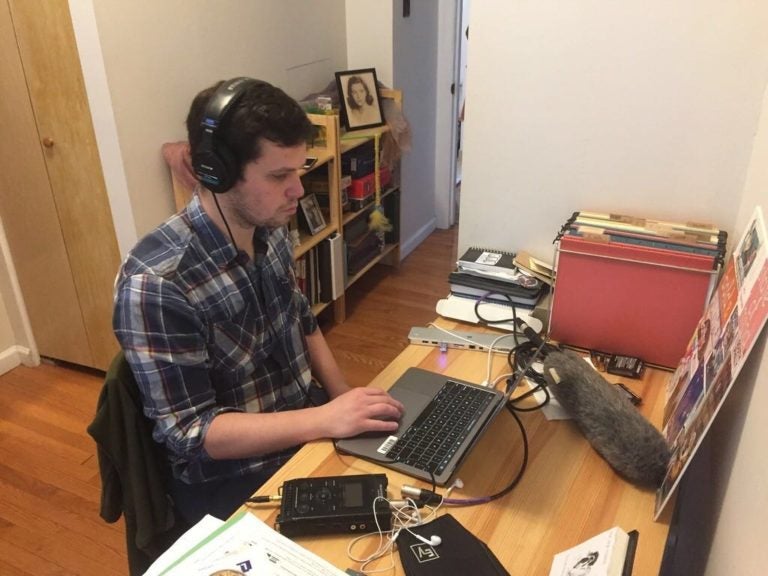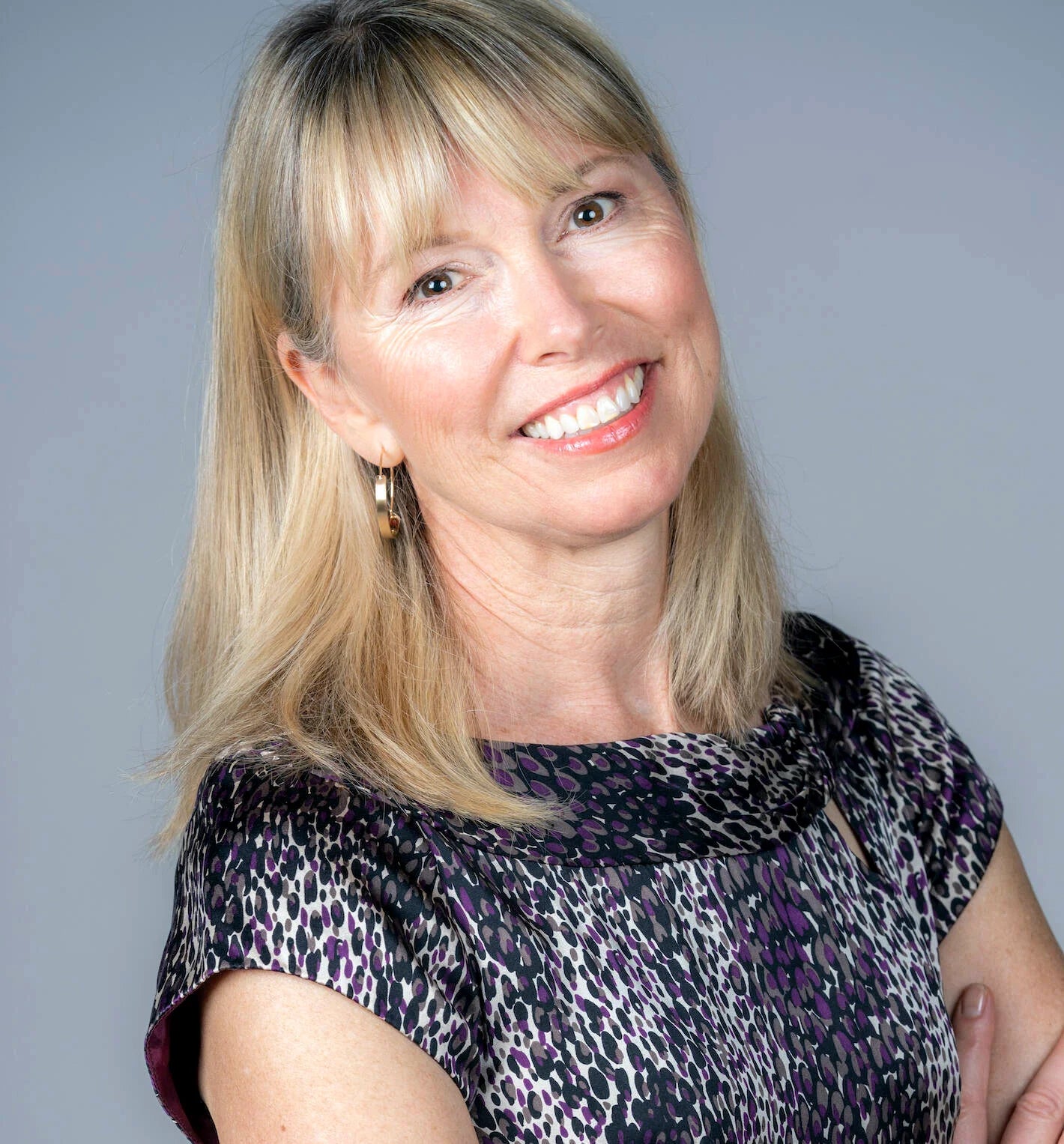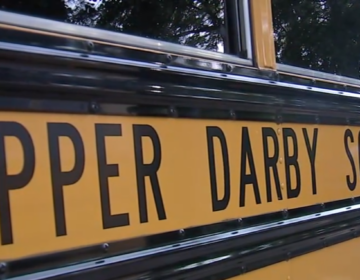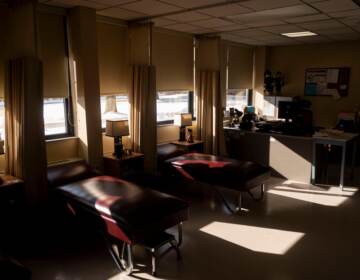‘How do you create a version of school that truly is for everybody but is also virtual?’
Morning Edition host Jennifer Lynn speaks with Keystone Crossroads reporter Avi Wolfman-Arent about how Philly schools are changing during COVID-19
Listen 6:10
Keystone Crossroads reporter Avi Wolfman-Arent working from home. (Rosie Dillon)
Some students are better equipped than others to assimilate to remote learning plans during the coronavirus pandemic.
In a perfect world, all kids have school-issued laptops, strong internet access, and someone they listen to around — to make sure they stay on top of lessons. But online school during COVID-19 is far from perfect.
Keystone Crossroads’ Avi Wolfman-Arent covers education and joins us to talk about this.
–
Good morning, Avi.
Good morning, Jennifer.
Avi, so many of us can feel very unsettled, very nervous right now, and routine is very important to us, think, to staying grounded. And especially for kids.
Yeah, absolutely. And I think it helps establish a sense of normalcy for kids, but also for teachers. I’ve talked with a lot of teachers who feel like they’re itching to teach again because it connects them to, you know, life before the pandemic.
I’d like to start with a timeline that follows this shift for educators, students and families to turn to remote learning as the cases of coronavirus have grown. And, you know, we went from a health scare to a health crisis. Let’s talk about the timeline.
Yeah, this moved incredibly quickly and it changed course several times. At first, lots of school districts were resistant to the idea of closing. Even in Philadelphia, they said, “We only closed because the schools in Montgomery County closed. And, you know, we couldn’t get our teachers who lived in Montgomery County to come and teach in Philadelphia.”
Quickly, we learned that these schools will be closed for a long time. In the beginning, there was a sense that there would be sort of light education going on, but not a lot of direct instruction. That changed when the U.S. Department of Education issued new guidance saying, “No, you’ve really got to offer the most instruction that you can.”
That, combined with the realization that schools were going to be closed for a long, long time, has kicked school districts in a new direction, which is basically trying to get online as quickly as possible and offer some sort of comprehensive type of education for weeks, months, maybe the rest of the school year.
Yeah. What are educators in general attempting to do?
So the first hurdles they have to clear are the technological hurdles. There’s two basic forms of that: the first is that a lot of students don’t have the technology they need at home, the hardware they need at home. The most obvious is laptops, right? So Philadelphia is buying as many as 50,000 Chromebooks for students so that they can log on to assignments from home.
The second big hurdle that districts are trying to clear is internet access. A lot of students don’t have internet access at home. In some cases, it’s because the families can’t afford or don’t pay for internet access. And a lot of rural districts in Pennsylvania, it can be a cost issue, but it’s also just the fact that there isn’t broadband access available. The FCC estimates that 600,000 Pennsylvanians don’t have broadband access. And some researchers think that’s a low-end estimate. You can buy these things like laptops and wireless hotspots, but there are indications that because a lot of school districts are trying to buy these things all at once, these things either are not available or they cost a lot more money than they used to.
So that leaves some kids, some families dangling. Let’s look a little deeper at who else can be left out.
Yeah. So in addition to some of these hard barriers, I would say that there are soft barriers too, right? They’re harder to quantify or to fix really quickly. So one is that teachers and students need training on how to use the technology. You can give them Chromebooks, but most are not used to conducting education 100% online.
Teachers are going to have to work with students, I imagine, a sort of one-to-one basis to get them logged on, especially younger kids, you can imagine. And then there are just the issues that are created by the stress of this entire situation, right? You might have students have to look after younger siblings. There might be food access issues. You might have situations where mom and dad lost their job; money is tight; family stress is high. And so trying to learn in a new format while society is under all of these pressures is going to be difficult.
There are lots of moments along that chain where students can disengage. And the challenge is going to be for educators to try to keep them in the boat.
Were there ever any standards to follow for this kind of remote learning pulled together so quickly?
It seems to be all over the place. There’s really no standard. There are schools that are cyber schools, right? There are online schools. Pennsylvania actually has more students in online schools than most states. Some would argue, yes, they provide some sort of roadmap. But the issue is that those schools themselves would admit that online learning is not for every student.
It’s not really meant to be a replacement for brick and mortar schools; it’s just for students who feel like they can really learn in that way better. And so how do you create a version of school that truly is for everybody but is also virtual? And I think this is a particularly acute challenge in the younger grades. You know, kindergartners, first graders, second graders, how do you replicate the experience of being in a really, really early grade classroom online with students who are maybe learning the technology for the first time? I think it’s going to be difficult.
How are you approaching your beat right now?
I think the toughest part for me is that everything about the education world is changing all at once. Education is really localized and it always has been. Every school district, and there are 500 in Pennsylvania, gets to make its own decisions about this. This is really a lot of distinct decisions happening all at once, and it is hard to keep track of.
Keystone Crossroads Avi Wolfman-Arent. He covers education. Thanks so much.
Thanks for having me, Jennifer.
WHYY is your source for fact-based, in-depth journalism and information. As a nonprofit organization, we rely on financial support from readers like you. Please give today.



![CoronavirusPandemic_1024x512[1]](https://whyy.org/wp-content/uploads/2020/03/CoronavirusPandemic_1024x5121-300x150.jpg)

